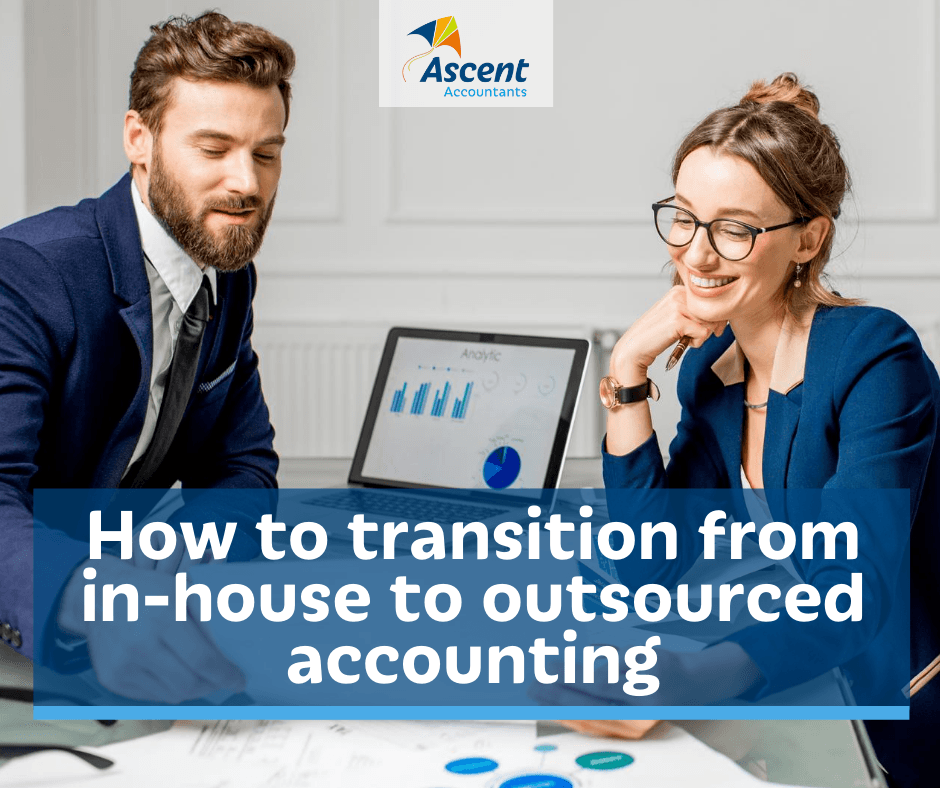How to transition from in-house to outsourced accounting

Choosing the right accountant
This may seem obvious, but you need to really research and find the right accountants to fit you and your businesses needs. Different accountants specialise in different types of accounting, so you need to not only know and be able to identify your business needs, but also know exactly what you want from their services. For example, if you’re a small business, you don’t want to go to an accounting firm that mainly focusses or large-scale businesses.
A good accountant will be attentive from the start, and will make sure to establish and understand your business needs. This also means that they will be able to be really helpful and support your business during the transition period. With the right accountant, the process of transitioning from in-house to outsourced accounting should be as simple., streamlined and stress free as possible for your business.
If you find this isn’t the case, then maybe it’s a sign that you need to choose a different accounting company.
Planning ahead
The process of transitioning from in-house to outsourced accounting can be a lengthy process for your business, so you need to ensure that you plan well ahead and budget enough time. This could be anywhere from 2 to 4 weeks, depending on the nature of your accounts.
Your business accountant should also be able to assist with this and help to give an estimated time frame of the process to transition your accounts.
A good way to plan time for your business to smoothly transition from in-house to outsourced accounting is to aim to do it at a time when your business is a bit quieter. This takes away some stress and pressure from the process, and allows your whole team to be on board to help the process along.
In business, failing to plan is planning to fail – and the process of transitioning from in-house to outsourced accounting is no exception to this.
Setting goals and being aware of potential obstacles
As you begin this new stage of your business, be sure to set clear boundaries and guidelines from the start. This new business relationship with your outsourced accountants is very important and starting off on the right foot is imperative.
Some ways that you can do this is to prepare a list of any know issues or obstacles you are already aware of that come up in the existing accounting processes within your business. This information will help the outsourced accountants a lot so that they are able to focus on resolving any accounting issues from the beginning.
Another really helpful step is to also make a list of your financial goals. By letting your new outsourced accountants be fully aware of your desired outcomes and end goals for your business, they are able to start working towards them from the beginning, meaning you can see greater results within your business, sooner.
Communication
Communication is probably the most important element when it comes to transitioning from in-house to outsourced accounting. Managing any major business changes need to be very well communicated. Making sure your whole team is on board, making sure that all your business goals and issues are well explained, and making sure to keep this open communication flowing between your business and accountants, not only during the transition period, but also permanently going forward.
Another big thing about communication is not being afraid to ask your accountants questions. Outsourcing means that you are hiring an expert in accounting, and as a small business, still having an understanding of what’s going on within your business is important. So don’t be afraid to ask your accountants questions so you understand what’s going on and can ensure that both teams are happy and working towards the same goal.
If you’re looking to make the switch from in-house to outsourced accounting, please don’t hesitate to get in contact. We are here to help and to make this process as smooth and comfortable as possible.
Need help with your accounting?








